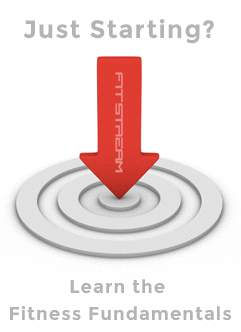A Beginners Introduction to Mixed Martial Arts - MMA
Mixed Martial Arts (MMA) is the professional sport formerly known as cage-fighting. A sport often referred to as the most dangerous of all forms of fighting competition.

Originally, MMA evolved from 'no holds barred' competitions but as the sport grew in popularity more safety rules and professional refereeing followed. MMA banned some of the more brutal moves but allows you to use the your fists, feet, elbows and knees as well as the body holds and throws of wrestling.
Fight rules differ depending on the organising body but it's generally accepted that the use of a knee or stamp to the head of a grounded opponent, groin striking, and eye gauges are not permitted. MMA fights can be won by K.O. / T.K.O. (when the referee stops the fight), by submission, or on points.
Core MMA Components
MMA is made up of five core components as part of the martial artist's game:
- Striking
- Takedowns
- Sprawling
- Floor Work
- Submission holds
Striking
The techniques involved in striking an opponent with your body.
Takedowns
The ability to off-balance an opponent and bring them to the ground, typically with the initiator landing a top. Commonly this will take the form of a double or single leg takedown attempt, similar to a rugby tackle.
Sprawling
A defensive technique in response to takedown attempts, sprawling is essentially mastering the ability of staying on your feet. This skill is particularly important given that the fighter who successfully takes down an opponent will be in the dominant fighting position.
Floor Work
Essentially, ground work involves fighting tactics whilst grounded, be it defensive or attacking movement. Ideally manoeuvring yourself into a dominant position to strike or achieve a submission hold.
Submission Holds
The use of "holds" to force your opponent to submit due to pain or fear of injury. There are many different types of hold such as choke holds, joint locks, and compression locks.
MMA Training and Fitness
MMA fighters require bulletproof fitness.
Due to the diverse nature of the sport you'll find some of the most well-rounded, cross-trained athletes around in MMA.
Training for MMA demands focus, dedication and intelligent application as fights require a tremendous amount of skill, heart and determination. Top MMA fighters have mastered multiple forms of martial art in order to compete at the very highest level and represent the very elite combat athlete.
The methods of acheiving this level of fitness are the very definition of functional training. Fighters are always training to better themselves in an area that improves performance in the ring. You will commonly find tyre flipping, sledge-hammer work, gymnastics rings and kettlebell exercises featuring in MMA workouts.
Psychological strength is just as important a factor in MMA as physical strength as fights requires self motivation and extreme mental commitment to overcome pain barriers, endure increasing intensity and maintain the inner strength to face a brutal confrontation and go one-on-one in the ring.
Check the Fitstream store for links to MMA equipment.
MMA Workouts and Exercises
Training for fight strength and power
When training for strength and power the aim is for functional muscle and not dead weight or pretty muscles. Functional training will increase your power-to-weight ratio making you a stronger and faster fighter.
To build an MMA workout you need to choose exercises that mimic moves in the ring to enhance performance, such as -
- Dip exercises are a good choice for building triceps strength and increasing punching power or the ability to push opponents away.
- Squats will help develop speed and takedown skills, providing you with the power for driving into your opponent and picking them from the floor.
- The Deadlift is an excellent functional exercise for strengthening the trunk and lower back to ensure a fighters core strength is up to fight standard.
- Bench pressing will build a better chest and give you the requisite strength for intense grappling.
Training for cardio and endurance
It's often said that cardiovascular fitness is 90% of a fight so it's absolutely essential to work on this element of your training.
You need to ensure cardio is focused on developing the necessary stamina to plough through an entire fight and that you're able to comfortable handle the tempo, durations and rest periods of a competitive bout.
Get outside and run, try hill sprints, skipping, kettlebell swings and medicine ball slams.










